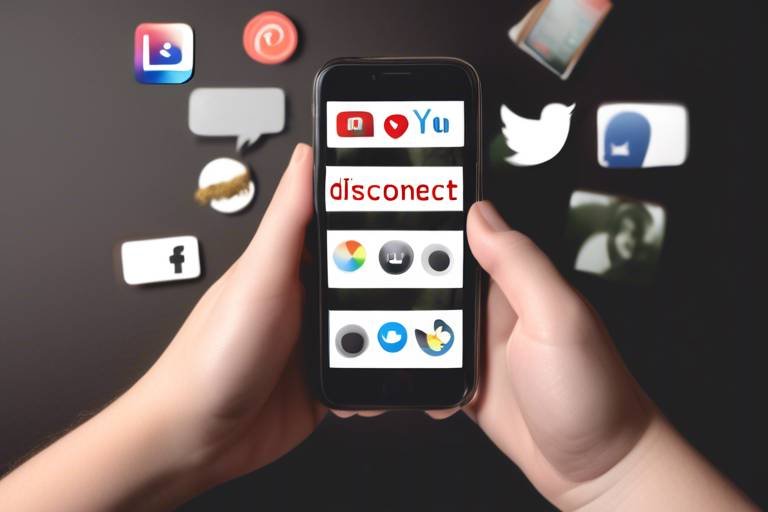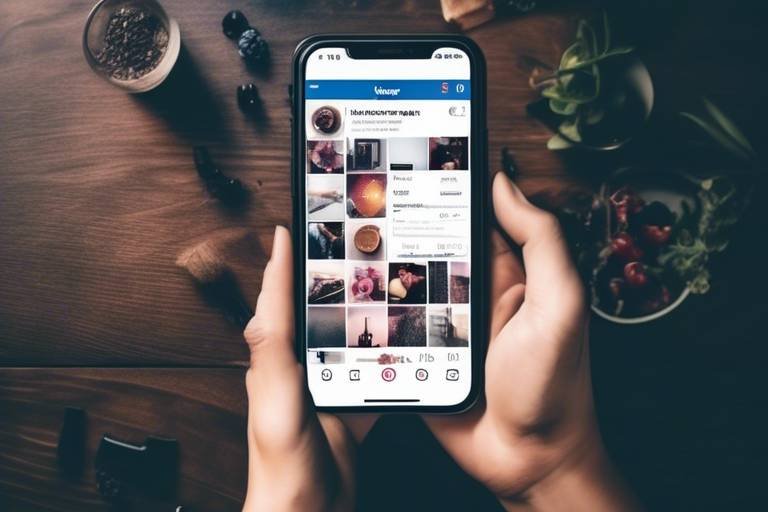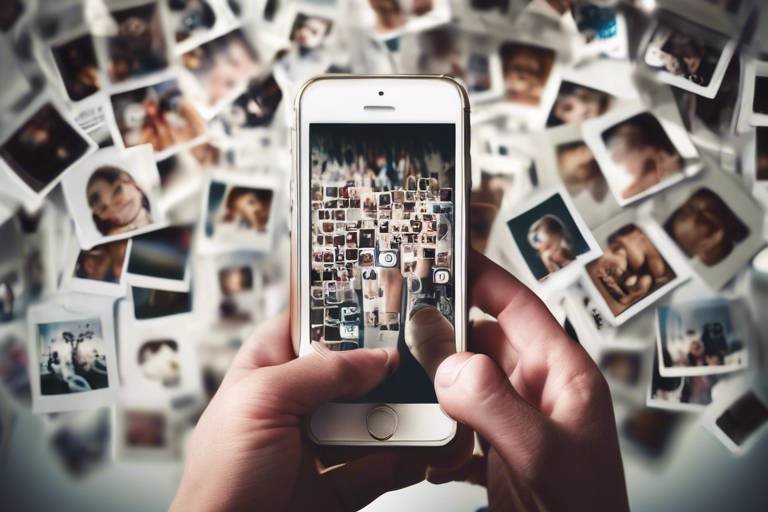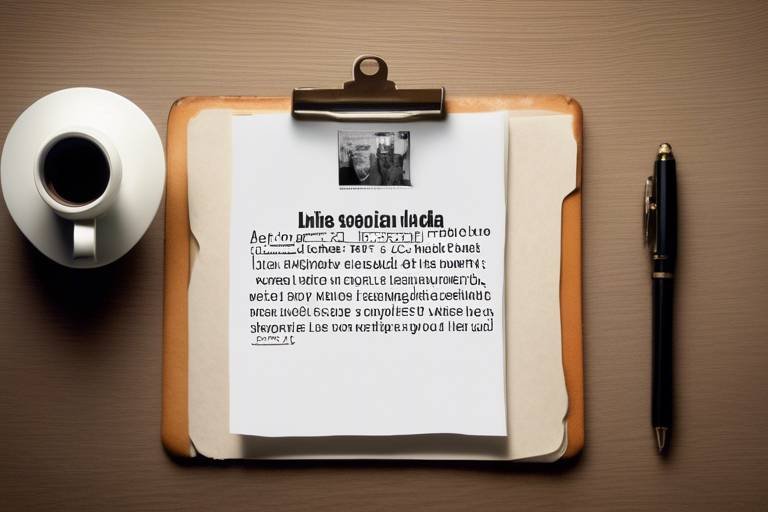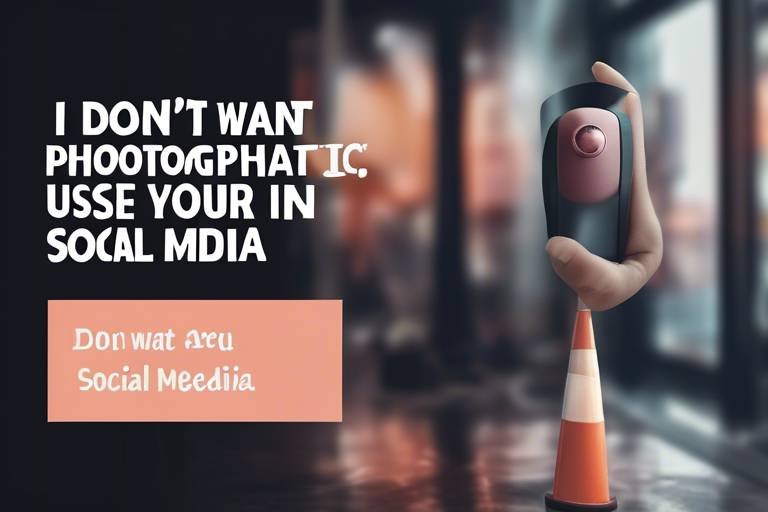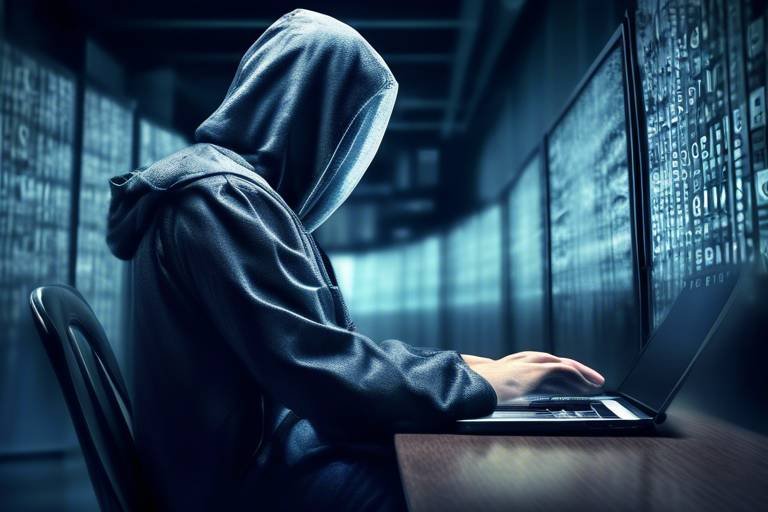How to Safely Disconnect from Social Media
In today's hyper-connected world, social media platforms have become an integral part of our daily lives. However, the constant barrage of notifications, updates, and interactions can often lead to feelings of overwhelm and anxiety. If you've ever found yourself scrolling mindlessly through your feed, wondering where the time went, you're not alone. Disconnecting from social media might seem daunting, but it can be a liberating experience that allows you to reclaim your time and mental well-being. This article explores effective strategies for safely disconnecting from social media, highlighting the benefits, potential challenges, and practical steps to take for a healthier digital balance.
Understanding why taking a break from social media can be beneficial for mental health and well-being is crucial. Social media can create a false sense of connection, leading us to prioritize online interactions over real-life relationships. Taking a step back allows us to focus on meaningful connections with family and friends. By reducing our online presence, we can experience a range of advantages:
- Improved Mental Health: Studies have shown that excessive social media use can lead to anxiety and depression. Taking a break can help alleviate these feelings.
- Increased Productivity: Less time scrolling means more time for hobbies, work, and self-care.
- Enhanced Real-Life Connections: Reconnecting with the people around you can lead to more fulfilling relationships.
Recognizing the specific triggers that lead to excessive social media use is essential. By understanding what prompts you to reach for your phone or computer, you can develop a more mindful approach to your online habits. Triggers can be emotional or environmental, and identifying them is the first step toward healthier usage.
Emotional states often drive social media usage. Feelings like boredom, loneliness, or anxiety can lead to increased screen time. Have you ever noticed how a dull moment can send you diving into your social media apps? It's a common escape mechanism. The key is to manage these emotions effectively. Instead of scrolling through your feed, consider:
- Journaling: Writing down your feelings can help process them and reduce the urge to seek validation online.
- Meditation: Practicing mindfulness can ground you and help manage anxiety.
- Engaging in Hobbies: Find activities that bring you joy and fulfillment outside of the digital realm.
Implementing practical strategies for emotional management is crucial. These can include setting aside time for self-reflection, dedicating moments to engage in physical activities, or even scheduling 'tech-free' time in your day. By actively managing your emotions, you can reduce the reliance on social media for comfort.
Understanding your behavioral patterns related to social media can help you identify when and why you use these platforms. Are you more likely to check your notifications after a stressful day? Recognizing these patterns can lead to more intentional usage and healthier habits. For instance, if you notice that you tend to scroll more during certain times of the day, you can adjust your routine to minimize those moments.
Environmental factors can also influence social media consumption. Your surroundings, social circles, and daily routines play a significant role in how often you engage with social media. For example, if your friends are always sharing updates, you might feel pressured to stay connected. To create a healthier environment, consider:
- Changing Your Scenery: Spend time in places that encourage offline interactions.
- Limiting Social Media Influences: Unfollow accounts that make you feel anxious or inadequate.
- Establishing Tech-Free Zones: Designate areas in your home where devices are not allowed.
Establishing clear boundaries for social media use is vital. Without limits, it's easy to lose track of time and find yourself scrolling for hours. Here are some practical steps to set those boundaries:
Effective time management can help you control your social media usage. Techniques such as scheduling specific online times and using apps to monitor screen time can be incredibly beneficial. For instance, you might allocate 30 minutes in the evening to catch up on social media, ensuring that it doesn't bleed into other areas of your life.
A digital detox plan can facilitate a successful disconnection from social media. This plan should be personalized to suit your lifestyle and goals. Here’s a simple step-by-step guide to help you create your own:
- Set Your Goals: Determine what you want to achieve from your detox.
- Choose Your Duration: Decide how long you want to disconnect, whether it's a day, a week, or longer.
- Inform Others: Let friends and family know about your plan to manage expectations.
- Find Alternatives: Identify activities to fill your time during the detox.
- Reflect: After your detox, take time to reflect on how you felt and what you learned.
Q: How long should I disconnect from social media?
A: The duration depends on your personal goals. Even a short break of a few days can be refreshing.
Q: Will my friends be upset if I disconnect?
A: Most friends will understand your need for a break. Communicating your intentions can help ease any concerns.
Q: What should I do instead of scrolling?
A: Engage in hobbies, read books, or spend time with loved ones. Find activities that bring you joy and fulfillment.

The Importance of Disconnecting
In today's hyper-connected world, the allure of social media can be overwhelming. We often find ourselves scrolling through feeds, liking posts, and engaging in endless conversations that can sometimes feel more like obligations than enjoyable interactions. But have you ever paused to consider the profound impact this constant connectivity has on your mental health? Disconnecting from social media isn't just a fleeting trend; it's a vital step towards reclaiming your peace of mind and enhancing your overall well-being.
One of the primary benefits of taking a break from social media is the opportunity to reconnect with yourself and your surroundings. When was the last time you truly immersed yourself in the moment, free from the distractions of notifications and updates? By stepping back, you allow yourself the space to engage in real-life connections, fostering deeper relationships with family and friends. Imagine sipping coffee with a friend, fully present, instead of half-heartedly glancing at your phone every few minutes. This shift can lead to more meaningful interactions and a greater sense of fulfillment.
Moreover, disconnecting from social media can significantly reduce feelings of anxiety and depression. Studies have shown that excessive use of social media can lead to feelings of inadequacy, envy, and loneliness. It's all too easy to compare our lives to the curated versions presented by others online. When you step away from the digital noise, you can focus on your own journey without the weight of unrealistic expectations. This can help cultivate a more positive self-image and a healthier mindset.
Additionally, taking a break allows for improved productivity. Have you noticed how easy it is to lose track of time while scrolling? Those minutes can quickly turn into hours, leaving you with little time for personal projects, hobbies, or even just relaxation. By disconnecting, you can redirect that time towards activities that genuinely enrich your life, whether it's reading a book, exploring a new hobby, or simply enjoying some well-deserved downtime.
To truly understand the significance of disconnecting, consider the following advantages:
- Enhanced Mental Clarity: Reducing social media consumption can lead to improved focus and cognitive function.
- Better Sleep Quality: Less screen time, especially before bed, can result in more restful sleep.
- Increased Physical Activity: With less time spent online, you might find yourself more inclined to engage in physical activities.
In conclusion, the importance of disconnecting from social media cannot be overstated. It offers a pathway to better mental health, stronger relationships, and a more fulfilling life. So, why not take that leap? Your mind and body will thank you for it.

Identifying Your Triggers
In our fast-paced digital world, it's all too easy to find ourselves mindlessly scrolling through social media feeds. But have you ever stopped to think about what drives you to pick up your phone or log into your favorite platform? Identifying your triggers is a crucial step in understanding your social media habits and can lead to a healthier relationship with technology. By recognizing these triggers, you can take control of your usage and create a more intentional online experience.
Triggers can be broadly categorized into two types: emotional and environmental. Understanding these categories can help you pinpoint the specific factors that lead to excessive social media use. For instance, emotional triggers often stem from feelings like boredom, loneliness, or anxiety. When these emotions arise, you might instinctively turn to social media for a quick distraction or a sense of connection. On the other hand, environmental triggers can include your surroundings, social circles, and daily routines that may encourage or discourage social media engagement.
Let's dive a bit deeper into emotional triggers. How often do you find yourself scrolling through Instagram or Twitter when you’re feeling down or bored? It's almost like a reflex! These feelings can create a cycle where you use social media to escape negative emotions, only to end up feeling worse afterward. Acknowledging these emotional states is the first step toward breaking the cycle. Consider keeping a journal to track your feelings and your social media usage. You might discover patterns that reveal how certain emotions lead you to seek online interactions.
So, how can you manage these emotional triggers effectively? Here are a few strategies that can help:
- Journaling: Write down your thoughts and feelings. This can help you process emotions without resorting to social media.
- Meditation: Practicing mindfulness can ground you and reduce the urge to escape through your phone.
- Engaging in Hobbies: Find activities that bring you joy and fulfillment, such as painting, reading, or exercising, to distract you from negative feelings.
In addition to emotional triggers, it's essential to recognize your behavioral patterns. Ask yourself: When do I usually reach for my phone? Is it during specific times of the day or in certain situations? By identifying these patterns, you can start to make intentional choices about your social media usage. For example, if you notice that you often scroll through social media while watching TV, consider setting specific times for checking your accounts instead of letting it become a mindless habit.
Now, let’s talk about environmental triggers. Your surroundings play a significant role in your online behavior. Are you in a social setting where everyone is glued to their phones? Or perhaps you have a habit of checking your notifications while waiting in line? These external factors can influence your social media habits more than you might think. To create a healthier online experience, try altering your environment. For instance, designate certain areas of your home as “phone-free zones” or establish times during the day when you disconnect completely.
In summary, identifying your triggers is a vital first step in creating a balanced relationship with social media. By recognizing both emotional and environmental factors that lead to excessive usage, you can develop strategies to mitigate these triggers and foster a healthier, more mindful approach to your online interactions.
Q: How do I know if I need to disconnect from social media?
A: If you find yourself feeling anxious, overwhelmed, or unhappy after spending time online, it might be a sign that you need a break. Pay attention to how social media affects your mood and overall well-being.
Q: What are some signs of social media addiction?
A: Signs include feeling an overwhelming urge to check notifications, neglecting real-life relationships, and experiencing anxiety when unable to access social media.
Q: How long should I disconnect from social media?
A: The duration of your break is entirely up to you. Some people find a few days helpful, while others may benefit from a few weeks or even longer. Listen to your needs and adjust accordingly.
Q: Will I miss out on important updates if I disconnect?
A: While you may miss some updates, important news often finds its way to you through other channels. Focus on the benefits of disconnecting and how it can improve your mental health.

Emotional Triggers
We’ve all been there: you’re feeling a bit down or maybe a little bored, and before you know it, you’re scrolling through your social media feeds for hours. It’s almost like an automatic response, right? These emotional triggers can often lead to excessive social media usage, and understanding them is the first step towards taking back control. Recognizing that emotions such as loneliness, anxiety, or even curiosity can push you toward your phone or computer is crucial. Think of it as a cycle: you feel a certain way, you turn to social media for comfort or distraction, and then you may end up feeling even worse after seeing something that triggers more negative emotions.
Let’s break this down a bit. Emotional triggers can be categorized into a few common feelings:
- Boredom: When you’re bored, social media can seem like the perfect escape. But this can lead to mindless scrolling and a loss of time.
- Loneliness: In moments of solitude, many people turn to social media to feel connected. However, this can often lead to feelings of inadequacy when comparing oneself to others.
- Anxiety: Social media can both alleviate and exacerbate anxiety. While it might provide a temporary distraction, the constant influx of information can lead to overwhelming feelings.
Recognizing these triggers allows you to make a conscious choice about your social media use. Instead of automatically reaching for your phone, consider other activities that can engage your mind and improve your mood. For example, if boredom strikes, why not pick up a book or try a new hobby? If loneliness is creeping in, perhaps call a friend or go for a walk instead of scrolling through your feed. The goal is to replace the automatic response to these emotions with more fulfilling and meaningful actions.
It's important to remember that acknowledging your feelings is a vital part of managing them. By journaling your emotions or practicing mindfulness meditation, you can develop a better understanding of what drives you to seek social media as an outlet. This self-awareness can empower you to make healthier choices and create a more balanced relationship with technology.
In essence, while it’s easy to get caught in the web of emotional triggers, breaking that cycle is possible. By identifying your feelings and finding alternative ways to cope, you can transform your relationship with social media into a more positive experience. So, the next time you feel the urge to scroll, pause and ask yourself: “What am I really feeling right now?” Your mental well-being will thank you for it!

Strategies for Emotional Management
Managing emotions is a critical aspect of reducing social media overuse. When feelings like boredom, loneliness, or anxiety creep in, it can be tempting to scroll through your feed as a way to escape or distract yourself. However, this often leads to a cycle of dependency on social media to feel better, which can ironically heighten those negative emotions. So, how can we break this cycle? Here are some effective strategies:
First and foremost, journaling can be a powerful tool. By putting pen to paper, you allow yourself to express your thoughts and feelings freely. This practice not only helps in processing emotions but also provides clarity on what triggers your urge to check social media. Consider setting aside a few minutes each day to jot down your feelings. You might be surprised by the patterns you uncover.
Another excellent strategy is meditation. Taking just ten minutes a day to sit in silence and focus on your breath can significantly reduce anxiety and help ground you in the present moment. Apps like Headspace or Calm offer guided meditations that can help beginners get started. The more you practice, the easier it becomes to manage those emotional urges that lead you to social media.
Additionally, engaging in hobbies that foster emotional well-being is essential. Whether it’s painting, gardening, or playing a musical instrument, immersing yourself in activities you love can redirect your focus from social media to something more fulfilling. Not only do these hobbies provide a creative outlet, but they also promote a sense of achievement and happiness.
To further enhance your emotional management, consider creating a support network. Surrounding yourself with friends and family who understand your goals can provide the encouragement you need to stay off social media. Share your intentions with them and ask for their support in holding you accountable. This connection can lead to more meaningful interactions and help you feel less isolated.
Lastly, it’s crucial to recognize your behavioral patterns. Keep a log of when you feel the urge to check social media and what emotions accompany it. By identifying these patterns, you can devise a plan to combat them. For instance, if you notice you tend to scroll when you’re bored, plan activities that keep you engaged, such as reading a book or going for a walk.
In summary, managing emotions effectively requires a multifaceted approach. By incorporating journaling, meditation, hobbies, building a support network, and recognizing behavioral patterns, you can create a healthier relationship with social media. Remember, it’s about finding balance and prioritizing your mental well-being over fleeting online interactions.
- Why is it important to manage my emotions regarding social media?
Managing your emotions helps prevent dependency on social media for validation and can lead to healthier online habits. - How can journaling help me?
Journaling allows you to process your thoughts and emotions, making it easier to identify triggers that lead to excessive social media use. - What if I don’t have time to meditate?
Even a few minutes of deep breathing or mindfulness can be beneficial. Start small and gradually increase your practice. - Can hobbies really make a difference?
Absolutely! Hobbies can provide a sense of fulfillment and reduce the urge to seek distraction through social media.

Recognizing Behavioral Patterns
Understanding your behavioral patterns related to social media usage is like holding up a mirror to your habits. It’s essential to take a step back and observe how you interact with these platforms. When do you find yourself scrolling aimlessly? Is it during your lunch break, or perhaps late at night when the world is quiet? Recognizing these moments can be enlightening, revealing not just when you use social media, but also why you turn to it in the first place.
Many people tend to gravitate towards social media during specific times or situations, often driven by underlying emotions or environmental cues. For instance, you might notice that you check your social feeds when you’re feeling bored or anxious. This behavior can create a cycle where social media becomes a go-to escape, leading to more frequent usage. By identifying these triggers, you can begin to break the cycle and reclaim your time.
To help you understand your patterns better, consider keeping a social media diary. Track your usage for a week or two, noting the times you log in, the duration of your sessions, and your emotional state before and after using social media. This exercise can shine a light on your habits, revealing trends that you might not have noticed before. For example, you might find that:
| Time of Day | Duration | Emotional State |
|---|---|---|
| Morning | 30 minutes | Curious |
| Afternoon | 1 hour | Bored |
| Evening | 2 hours | Anxious |
By analyzing the data you collect, you might discover that you’re more likely to scroll through your feeds when you’re feeling lonely or stressed. Recognizing these patterns is the first step toward making conscious choices about your social media use. Instead of reaching for your phone, you could opt for a walk, read a book, or even call a friend. Remember, the goal isn’t to eliminate social media completely but to create a healthier relationship with it.
Additionally, consider the context in which you use social media. Are you using it to connect with friends, or are you mindlessly scrolling through content? Understanding the intention behind your usage can help you make more mindful choices. If you find yourself using social media out of habit rather than genuine interest, it might be time to reassess your online habits.
Ultimately, recognizing your behavioral patterns is about gaining awareness. Once you understand when and why you use social media, you can implement strategies to shift your habits toward more positive and fulfilling activities. This process of self-discovery not only enhances your digital well-being but also fosters deeper connections in your real life, paving the way for a more balanced existence.
Q: How can I start recognizing my social media patterns?
A: Start by keeping a diary of your social media usage. Note the times, duration, and your emotional state before and after using it.
Q: What should I do if I realize my social media use is excessive?
A: Consider setting limits on your usage and finding alternative activities to engage in when you feel the urge to scroll.
Q: Can recognizing my patterns really help me disconnect?
A: Yes! Awareness is the first step toward change. Once you identify your triggers, you can take proactive steps to create healthier habits.

Environmental Triggers
When we talk about , we’re diving into the surroundings that shape our social media habits. You might not realize it, but your environment plays a huge role in how often you reach for your phone or log into your favorite platforms. Think about it: are you more likely to scroll through Instagram when you’re lounging on the couch with a cozy blanket or when you’re out and about with friends? The answer is usually the former. Your home, your social circles, and even your daily routines can either encourage or discourage excessive social media use.
For instance, if you find yourself in a cluttered space, it might lead to feelings of stress or boredom, prompting you to seek distraction online. On the flip side, a clean and organized environment can help you feel more focused and less inclined to scroll endlessly. Moreover, the company you keep matters too. If your friends are always sharing the latest memes or updates, it’s easy to get sucked into the digital whirlpool. However, if you surround yourself with people who prioritize face-to-face interactions, you may find yourself spending less time online.
To create a healthier environment, consider these practical tips:
- Designate Tech-Free Zones: Create spaces in your home where devices are not allowed, such as the dining room or bedroom. This encourages real-life interactions and helps you unwind.
- Establish a Social Media-Free Routine: Start your day without checking your phone. Instead, focus on activities like reading, exercising, or enjoying a quiet breakfast.
- Limit Notifications: Turn off non-essential notifications that can pull you back into the digital world. This can help reduce the temptation to check your phone constantly.
Ultimately, recognizing how your environment influences your social media habits is the first step toward making positive changes. By being mindful of your surroundings, you can create a space that fosters healthier habits and encourages you to engage more with the world around you rather than through a screen. Remember, the goal is to strike a balance that allows you to enjoy the benefits of social media without letting it take over your life.
Q: How can I identify my environmental triggers?
A: Start by observing your habits in different environments. Notice when you feel the urge to check social media and what surroundings are associated with that urge. Keep a journal to track these patterns.
Q: What are some signs that my environment is negatively impacting my social media use?
A: If you find yourself feeling anxious, bored, or distracted in your environment, it may lead to increased social media use. Additionally, if you notice that your online interactions are replacing real-life connections, it's time to reassess your surroundings.
Q: Can changing my environment really help reduce social media usage?
A: Absolutely! By creating a more intentional space that promotes offline activities, you can reduce the temptation to engage with social media. Simple changes like decluttering your space or establishing tech-free zones can make a significant difference.

Setting Clear Boundaries
In today's hyper-connected world, setting clear boundaries around social media use is not just a good idea; it's essential for maintaining a healthy balance in our lives. Think of social media as a vast ocean—while it can be refreshing and exhilarating, without proper boundaries, you might find yourself drowning in it. Establishing limits helps to ensure that you enjoy the benefits of social media without letting it consume your time and energy. So, how do you go about creating these boundaries?
First and foremost, it’s crucial to recognize that boundaries are not about deprivation; they’re about empowerment. By setting limits, you take control of your digital life instead of letting it control you. Imagine setting aside specific times during your day to check your social media accounts. This simple act can transform your relationship with these platforms. Instead of mindlessly scrolling, you’ll have a purpose and a timeframe, which can significantly reduce the amount of time you spend online.
One effective way to implement these boundaries is through time management techniques. For example, you could use a timer to limit your social media sessions to 15 or 30 minutes. When the timer goes off, it’s a cue to step away. You might even consider using apps designed to monitor and limit your screen time. These tools can provide insights into your usage patterns, helping you to make informed decisions about your online habits.
Additionally, consider creating a digital detox plan. This plan can serve as a roadmap for your journey toward a healthier relationship with social media. Here’s a simple outline to get you started:
| Step | Description |
|---|---|
| 1. Assess Your Current Usage | Take note of how much time you spend on social media and identify your primary platforms. |
| 2. Set Specific Goals | Decide how much time you want to reduce your social media usage by each week. |
| 3. Identify Non-Digital Activities | List hobbies or activities you enjoy that can replace social media time. |
| 4. Create a Schedule | Designate specific times for social media use and stick to them. |
| 5. Evaluate and Adjust | After a week or two, assess how you feel and adjust your plan as needed. |
Setting these boundaries might feel challenging at first, especially if you’re used to a more free-form approach to social media. However, think of it as training for a marathon. Initially, it may seem daunting, but with consistent effort and gradual adjustments, it becomes more manageable. You’ll likely find that as you create more space in your life away from social media, you’ll begin to rediscover activities and relationships that bring you genuine joy.
Finally, remember that it’s perfectly okay to take breaks from social media altogether. These breaks can be as short as a weekend or as long as a month. The key is to listen to your needs and make adjustments accordingly. By setting clear boundaries, you’re not just protecting your time; you’re also investing in your mental well-being and personal growth.

Time Management Techniques
Managing your time effectively is crucial when it comes to controlling your social media usage. It’s all about finding a balance that allows you to enjoy the benefits of social platforms without letting them consume your life. One effective technique is to schedule specific times for social media use. By allocating dedicated slots in your day for checking your feeds, you’re less likely to mindlessly scroll whenever you have a free moment. Imagine treating your social media time like a meeting—set a start and end time, and stick to it!
Another powerful method is to utilize screen time monitoring apps. These tools can provide you with insights into how much time you spend on various platforms, helping you identify patterns and make necessary adjustments. For instance, if you notice that you’re spending two hours a day on social media, you can set a goal to reduce that time by half. Many apps even allow you to set daily limits, sending you reminders when you’ve reached your threshold. This way, you can be more mindful and intentional about your online presence.
Creating a digital detox plan can also be a game-changer. This plan should outline your goals for reducing social media use and include specific strategies tailored to your lifestyle. For example, you might decide to go completely offline for a weekend or limit your usage to just 30 minutes a day during the week. Here’s a simple template you could follow:
| Day | Goal | Activity |
|---|---|---|
| Monday | Limit to 30 minutes | Engage in a hobby instead |
| Tuesday | Offline evening | Read a book or meditate |
| Wednesday | Social media free | Spend time with family |
| Thursday | Limit to 30 minutes | Explore nature |
| Friday | Offline evening | Cook a new recipe |
| Saturday | Digital detox | Go for a hike |
| Sunday | Reflect and plan for the week | Journal your experiences |
Lastly, don’t underestimate the power of accountability. Share your goals with friends or family who can support you in your journey toward a healthier relationship with social media. You might even consider joining a group or community focused on digital wellness. When you have others cheering you on, it can make all the difference in sticking to your plan.
- How long should I take a break from social media? - The duration of your break can vary based on your needs. Start with a few days or a week, and see how you feel.
- What are some signs I need to disconnect? - If you feel anxious, overwhelmed, or distracted by social media, it might be time to take a step back.
- Can I still use social media while implementing these techniques? - Absolutely! The goal is to create a healthier balance, not to eliminate social media entirely.
- What if I miss out on important updates? - Consider checking in once a week to catch up on important news without the constant scrolling.

Creating a Digital Detox Plan
Embarking on a digital detox is like setting sail on a new adventure; it requires planning, commitment, and a clear destination. To start, you need to create a personalized digital detox plan that aligns with your lifestyle and goals. Think of this plan as your roadmap to a healthier relationship with technology, guiding you through the process of disconnecting from social media while reconnecting with yourself and the world around you.
First and foremost, it's essential to define the duration of your detox. Are you looking for a quick break of a few days, or do you want to commit to a more extended period, like a month? Setting a specific timeframe will help you stay accountable and give you a clear end goal. For instance, a 7-day detox can be a great starting point, allowing you to experience the benefits without feeling overwhelmed.
Next, consider the activities that will fill the time you usually spend scrolling through feeds. Replacing social media with fulfilling activities can make your detox feel less daunting and more rewarding. Here are some ideas to get you started:
- Engage in outdoor activities like hiking or biking.
- Pick up a new hobby, such as painting, cooking, or gardening.
- Spend quality time with friends and family, perhaps organizing a game night or a picnic.
- Explore mindfulness practices like yoga or meditation to help ground yourself.
Another crucial aspect of your digital detox plan is to inform your friends and family about your intentions. This way, they can support you during your journey and understand why you might be less available online. You can even create a fun group chat or email thread to keep everyone updated on your progress without the need for social media. Remember, communication is key!
As you prepare for your detox, it’s also helpful to set specific boundaries regarding your social media use. For example, you might decide to check your accounts only once a day or limit your usage to a specific time frame. By establishing these boundaries before starting your detox, you can create a safety net that helps you stay on track.
Finally, don’t forget to reflect on your experience throughout the detox. Keeping a journal can be an excellent way to document your feelings, thoughts, and any challenges you encounter along the way. This reflection not only helps you understand the impact of social media on your life but also allows you to recognize the positive changes that come from disconnecting.
In conclusion, creating a digital detox plan involves thoughtful preparation and a commitment to self-care. By defining your goals, filling your time with meaningful activities, communicating with your support system, setting boundaries, and reflecting on your journey, you can successfully navigate this digital landscape and emerge with a renewed sense of balance and well-being.
1. How long should my digital detox last?
A digital detox can last anywhere from a few days to several weeks. Start with a short duration, like a week, and adjust based on how you feel.
2. What should I do if I feel tempted to check social media?
When temptation strikes, engage in an alternative activity you enjoy, such as reading a book, going for a walk, or calling a friend.
3. Can I still use my phone during a digital detox?
Yes, you can use your phone for non-social media purposes, like listening to music or reading articles. The goal is to reduce social media consumption, not eliminate all technology.
4. Will I miss out on important updates while I'm away?
You might miss some updates, but remember that important news will still be available when you return. You can catch up with friends and family in person or through direct communication.
5. How can I maintain a healthier relationship with social media after my detox?
After your detox, consider setting specific limits on your social media use, such as time restrictions or designated social media-free zones in your day.
Frequently Asked Questions
- Why should I consider disconnecting from social media?
Taking a break from social media can significantly benefit your mental health. It allows you to focus on real-life connections, reduces feelings of anxiety and loneliness, and helps you regain control over your time and attention.
- What are common emotional triggers for excessive social media use?
Common emotional triggers include feelings of boredom, loneliness, or anxiety. These emotions can lead to increased screen time as individuals seek distraction or validation through online interactions.
- How can I manage my emotional triggers effectively?
Consider strategies like journaling to reflect on your feelings, practicing meditation to enhance mindfulness, or engaging in hobbies that bring you joy and fulfillment. These activities can help you cope with emotions without turning to social media.
- What are some environmental factors that influence social media consumption?
Your surroundings, social circles, and daily routines can all impact how much time you spend on social media. For instance, being in a social setting where everyone is on their phones can encourage you to join in, even if you didn't intend to.
- How can I set clear boundaries for my social media use?
Establish specific time limits for social media usage, and stick to them. You can also designate certain times of the day as "social media-free" to help create a more balanced digital lifestyle.
- What are effective time management techniques for controlling social media use?
Utilize scheduling tools to allocate specific times for social media, and consider using apps that monitor your screen time. This can help you stay aware of your usage patterns and encourage healthier habits.
- How do I create a digital detox plan?
Start by assessing your current social media habits and identifying your goals for the detox. Then, outline a step-by-step plan that includes specific actions, such as reducing daily screen time, deleting apps, or setting aside tech-free days.
- What benefits can I expect from a digital detox?
A digital detox can lead to improved mental clarity, better emotional well-being, enhanced focus on real-world relationships, and a greater sense of peace. You'll likely find more time for activities that truly enrich your life.

